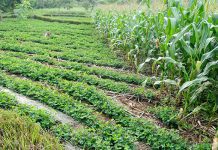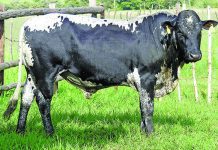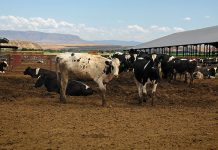THE LATEST FOOD PRICE MONITORING report predicts a possible slowdown in food prices in future, mainly as result of lower world agricultural commodity prices. But the report largely ignores the effect of the sharp increase in input prices during the last few months on future production. Farm input prices increased by 24,3% from 2006/07 to 2007/08. Fertiliser prices doubled and fuel prices increased 61%. Some input prices increased at a significantly lower rate.
Machinery and implement prices increased by 5% and packing material by 15%. On Producer Price Index level, fertiliser prices increased sharply by 91,7% from July 2007 to July 2008 and by 15,9% from June 2008 to July 2008, the sharpest increase of all products surveyed by Statistics SA. It’s difficult to explain this 15,9% increase in one month in terms of the price of inorganic chemicals (up 3,9% month-on-month) and petroleum products (up 40,8% year-on-year and 1,1% month-on-month). Farmers’ allegations that fertiliser prices are influenced by the size and value of the previous season’s crop is a possible cause of the higher prices.
In contrast, the increase in fuel prices is largely explained by the increase in the Brent crude oil price. In contrast to the sharp increase in fertiliser and fuel prices, the price of farm produce did not increase at the same rate. Grain prices are up 1,8% year-on-year. The price of livestock increased on average by 15,8%. Farmers will find it hard to produce food products with current input prices and still make a profit, especially if international product prices decrease as expected. Grain producers, especially, will have to do careful calculations before they start planting maize and other summer grains.
The need for watchdogs
The food price monitoring process has an inhibiting effect on food prices. If manufacturers know that “Big Brother is watching”, it has a moderating effect on their more adventurous pricing decisions. Largely through the efforts of the Deciduous Fruit Producers’ Trust, the National Agricultural Marketing Council has embarked on an input-price monitoring action, similar to the one that monitors food prices. The first two reports on the maize and fruit industries were recently published. President Thabo Mbeki also recently announced the formation of a so-called food control agency, presumably to do something about high food prices.
Producer organisations should continue to monitor input prices and report on cases of price exploitation. This should be done responsibly and without getting into a witch hunt. Sponsorships from agri-processors and input suppliers play a large role in funding producer organisations, however, farmers’ organisations can’t let the fact that they receive sponsorships limit their ability to speak out if prices increase at a rate that’s too fast or if they’re inconsistent with the price of the ingredients used to produce them. Responsible input suppliers will not stoop to blackmail if farmers’ organisations do their legitimate job of promoting the farmer’s business.
Strategies for farmers
Individual farmers have little control over input prices. They are price-takers on both the input and output level. In this they’re not unique – Anglo American is also a price-taker. But farmers can do much to ensure they buy products at the best prices. There are numerous examples of farmers buying collectively and getting huge discounts. Even very large farming companies do this. While it is uneconomical for small livestock producers to mix their own rations, it becomes a viable proposition if a number of farmers get together and erect a feed mill. There’s a lot of focus on value adding as a way of increasing income.
Less attention is spent on ways of lowering input prices by buying ingredients and mixing your own rations and fertiliser mixes. But farmers waste a lot of nutrients that they could use instead of expensive inorganic fertiliser. Biological farming methods and principles can lead to a reduction in fertiliser use and cultivation cost and provide higher yields. Farmers can no longer afford to view biological farming methods as alien and good only for the “greenies”. Faced with high input processes, farmers frequently cut down on input use.
The indiscriminate decrease in input use like unbalanced rations, too high or too low soil acidity, skipping vaccinations and other things farmers frequently do to save costs can have disastrous consequences. Rather make sure that you use the optimal mix of inputs needed to produce successfully. The increase in input prices has caught up with the slow increase in product prices. Livestock producers are also under pressure from high grain prices. While there are some indications of slightly lower grain prices, the price of roughage will remain high. Dr Koos Coetzee is an agricultural economist at the MPO. All opinions expressed are his own and do not reflect MPO policy. |fw








